 |
|
| Issue #135 • May/June, 2012 |
Arabs, the majority people in the Middle East, eat bread with every meal. In tradition and in daily life, bread is held to be a divine gift from God. The Egyptians call bread ‘aysh which means “life itself.” In the Arab world, if a piece of bread falls on the floor, a person will pick it up and kiss it, then eat it. I used to see this happen at home when my mother dropped a piece of bread on the floor, not allowing it to be thrown away with the garbage.
The Spanish picked up this habit from the Arabs during their long stay in the Iberian Peninsula. In Spain, when a piece of bread falls on the floor, in the Arab fashion they will say: “Es pan de Dios” (in Arabic, ‘aysh Allah means God’s bread).
The Arabs claim that they cannot taste other foods without bread and the bread types they have to choose from are numerous and varied. Arab bread comes in many textures, sizes, and shapes. Without question, the mother of all these Middle Eastern breads is pita by far, the most popularly found in the Middle East. Called Khubz Arabee among the Arabs in that part of the world and once called flatbread or Syrian bread in the United States that is before Syria became the “bad boy” of the Middle East it is now widely known as pita bread a Greek name.
Pita bread, like all types of Middle Eastern breads, is usually soft and pliable perfect for the Arab way of eating. One of the greatest advantages of this type of bread means that you can take pita bread and dip it in olive oil, yogurt spreads, hummus, and tahini no need for a knife or a spoon.
Pita bread is used for picking up meat, vegetables, and salads and serves as a scoop for sauces, dips, yogurt, and other semi-liquids. When the loaf is cut into two, the top and bottom of the loaf separate easily and the halves form pockets which can be filled with hot falafel, shawarma (barbecued meats), kufta (Arab version of hamburgers), and/or salads to make delicious sandwiches.
The traditional way of baking Middle Eastern bread is in highly heated brick ovens, with the loaves being slid into the ovens with wooden paddles. Of course, the making of Middle Eastern bread in the modern countries of the Middle East and in North America is an automated process, from the flour to the piping hot bread. Today, in most cities and towns in the Middle East and in the major urban centers in both North and South America people usually buy pita bread commercially produced from Mediterranean and Middle Eastern bakeries and stores bypassing the work needed to make the bread. However, even though it takes time and energy to make your own homemade Middle Eastern breads, it can be one of your most exciting cooking experiences. The aroma coming from the kitchen, the delicious taste of bread fresh from the oven, and, above all, the pleasure you feel when you bake homemade bread are well worth the work involved.
Just think of the mouth-watering aroma flowing out of the oven, especially from thyme-topped bread filling the room. It’s an atmosphere one rarely forgets. My mother on our homestead farm baked Khubz Arabee and other Arab breads at least once a week. I can still remember vividly today the smell of my mother’s bread fresh out of the oven.
Pita bread – Khubz ‘Arabee
Makes about 12 loaves
The bread will puff up like a balloon while baking and will collapse when cooled. Loaves may be eaten immediately, or frozen for long-term storage. For short-term storage, the loaves should be sealed in plastic wrap or a plastic bag. Unfreeze bread in their plastic bag at room temperature. The loaves, when ready to eat, may be quickly warmed in the oven.
2 packages dried yeast (4½ tsp.)
1 Tbsp. sugar
1½ cups lukewarm water, divided
4 cups flour (white, whole wheat, or a half-and-half mixture of each)
1 tsp. salt
1 Tbsp. olive oil
Dissolve yeast and sugar in ½ cup of the water; then set aside for about 10 minutes.
Mix flour, salt, and oil in a large bowl; then add yeast mixture and remaining warm water. Knead until smooth and elastic, adding more water or flour if necessary. Place in a warm and oiled bowl, turning dough over to coat surface with oil. Cover bowl with a dry cloth and set in a warm place, allowing dough to rise until double in volume (about 2 to 3 hours).
Punch dough down; then knead for about 2 minutes. Form into 12 smooth balls, rolling them gently between the hands. Place balls on dry cloth in warm place; then cover with another cloth and let rise for about 30 minutes.
Preheat oven to 500° F.
On lightly-floured board, roll out balls into circles about 1/8-inch thick. Bake the loaves 5-8 minutes on a preheated baking sheet with the oven rack at the center notch.
As each loaf is cooked, remove and immediately cover with a towel then a piece of plastic over the towel. Place the next loaf over or next to the first and immediately re-cover. Follow the same procedure until all the loaves are cooked. If this procedure is not followed the loaves will become hard.
Here is a basic dough recipe that can be used with the three following variations.
1 Tbsp. sugar
1 pkg. dry yeast (2¼ tsp.)
1 cup lukewarm water, divided
3 cups flour
½ tsp. salt
1/8 tsp. ground ginger
4 Tbsp. olive oil
To make the dough, dissolve sugar and yeast in ¼ cup of lukewarm water then allow to stand covered until yeast begins to froth.
In the meantime, combine flour, salt, and ginger in a mixing bowl, then make a well in the middle. Add yeast mixture, water, and oil. Knead into dough, adding more flour or water if necessary (do not allow the dough to become sticky). Shape into a ball then brush the outside with a few drops of oil. Place on a floured tray or pan, then cover with a cloth. Allow to rest in a warm spot until it becomes double in size.
Form dough into 12 balls then place them on a floured tray. Cover with a cloth and allow to stand in a warm place for 30 minutes. These dough balls will then be ready to use with the following recipes:
Thyme and sumac-topped bread
Makes 12 loaves
In the Greater Syria of the Middle East, this is a favoured breakfast dish, eaten piping hot.
1 basic dough recipe
Topping:
½ cup olive oil
3 Tbsp. thyme
4 Tbsp. sumac
2 Tbsp. sesame seeds
1 tsp. marjoram
½ tsp. salt
1/8 tsp. cayenne
Thoroughly mix all topping ingredients, then set aside.
Preheat oven to 350° F.
Roll dough balls into 1/8-inch thick rounds and place on well-greased cookie tray. With tips of fingers flatten inside of rounds, leaving the edges at a higher level. Spread the mixed ingredients evenly over top of rounds. Bake for about 18 minutes or until edges of rounds turn light brown. Serve hot or cold but preferably hot. If not to be eaten immediately brush lightly with olive oil then heat just before serving.
|
Chickpeas-topped bread
Makes 12 loaves
Often prepared by my mother, chickpeas pies were eaten by the peasants in the Middle East since pre-Roman times.
1 basic dough recipe
Topping:
4 Tbsp. olive oil
½ tsp. salt
½ tsp. pepper
1½ cups dried chickpeas, soaked overnight and drained
Combine topping ingredients, then set aside.
Preheat oven to 350° F.
Roll balls into 1/8-inch thick rounds and place on well-greased cookie tray. Stir chickpea mixture then firmly press a handful of chickpeas into each round. Sprinkle remaining oil over the chickpeas.
Bake for 20 minutes or until edges of the rounds turn light brown. Place under broiler for 2 minutes or until top lightly browns, then serve preferably hot. If not to be eaten immediately, brush lightly with olive oil then heat just before serving.
Cheese-topped bread
Makes 12 loaves
In the Middle East, cheese-topped breads vie with those of the thyme-topped ones as a hot breakfast food.
1 basic dough recipe
Topping:
4 Tbsp. olive oil
2 tsp. marjoram
1 tsp. pepper
1 tsp. oregano
½ tsp. salt
1/8 tsp. cayenne
1 medium onion, grated
2 Tbsp. tomato paste
2 cups crumpled feta cheese
Combine topping ingredients then set aside.
Preheat oven to 350° F.
Roll balls into 1/8-inch thick rounds then place on well-greased cookie tray. With tips of fingers flatten inside of rounds, leaving the edges at a higher level.
Thoroughly mix topping ingredients, then spread mixture evenly over flattened inside of rounds. Bake for 18 minutes or until edges of rounds turn light brown. Serve hot or cold but preferably hot. If not to be eaten immediately brush lightly with olive oil then heat just before serving.
Saj bread
Makes 8 loaves
Saj bread is very common in both Syria and Lebanon. A flat and thin round bread, it is baked on a domed metal griddle an upside down iron disk. Although popularly known as saj bread, it carries other names: kmaj, marook, or marquq. In certain regions saj bread is known as a form of pita or lavash breads, both of which as well can be cooked on a saj griddle or disk. If a disk cannot be found then bake in the oven.
3¼ cups flour
½ tsp. salt
2 Tbsp. olive oil
2 packages dry yeast dissolved in a ¼ cup warm water and 1 Tbsp. sugar and allowed to stand for 10 minutes
1 cup warm water
oil for coating the dough
Mix flour, salt, and oil in a bowl; then add yeast mixture and water. Knead until smooth and elastic, adding more water or flour if necessary. Place in a warm and oiled bowl, turning dough over to coat surface with oil in the bowl. Cover bowl with a dry cloth and set in a warm place, allowing dough to rise until double in volume (about 2 to 3 hours).
Divide into 8 balls then roll balls into circles as thin as possible (1/8-inch thick or less) on a floured surface with a rolling pin. Flip the flattened dough on a curved hot surface. Cook for about a minute on one side then flip to cook the other side. The bread can also be baked for about 3 minutes in an oven heated to 500° F.
As each loaf is cooked, remove, sprinkle lightly with a few drops of water, and immediately cover with a towel then a piece of plastic over the towel. Place the next loaf over the first and immediately re-cover. Follow the same procedure until all the loaves are cooked. If this procedure is not followed the loaves will become hard and brittle.
The bread is best eaten hot right after it is baked. The bread is excellent as a wrap for cheese, cooked meats, and vegetables.
|
Yemeni bread – Khubz
Makes about 10 circular loaves
To truly appreciate the bread of the Queen of Sheba’s land, one must dine in a Yemeni home. Dipping this warm bread in hulba, a Yemeni fenugreek sauce, then scooping up the vegetable morsels was, for me, an exotic way of enjoying the foods of that ancient part of the world.
2 cups flour
1 package dried yeast, dissolved in ½ cup warm water
½ tsp. salt
2 cups water
With a spatula or a wooden spoon, combine all ingredients together; then cover and allow to rest for 1 hour.
Preheat oven to 500° F.
Place a large cooking tray in the oven and allow it to heat. Carefully remove the tray and spread 6 tablespoons of the soft batter dough (thinly in a circle) on the heated tray. Bake about 4 minutes or until bread begins to brown. Flip loaves over and bake for a further minute. Remove and keep warm until ready to serve. These are thin crepe-like loaves.
Bedouin bread – Chubab
Makes 12 crepe-like loaves (pancake size)
This traditional Bedouin bread, found in the countries of the Arabian Peninsula, is today enhanced with ingredients not generally available to the Bedouin of the past. A delightful sweet bread, it is excellent for breakfast, but can be served warm with all meals.
1½ cups all-purpose flour
½ cup whole wheat flour
2 large eggs, beaten
4 tablespoons date syrup
½ cup plain yogurt
2 tablespoons butter, melted
2 packages dry yeast, dissolved in ½ cup warm water and allowed to stand for 10 minutes
2 cups warm water
Place all the ingredients in a food processor and process until very smooth thinner than pancake batter, adding more water if necessary. Cover and let stand in a warm place for about 2 hours.
In a lightly-greased small-sized frying pan, over medium/high heat, spread the batter very thin to make thin-like crepes and cook until bottoms are golden, turning over once. Sprinkle each piece while warm with a little smattering of melted butter then serve immediately.
Sweet Bread – Khubz Mohala
Makes 6 loaves
Khubz Mohala, healthy and wholesome, is often baked in a tannur, a type of outdoor oven introduced from Iran. Like scones, the bread is excellent when served with a hot beverage for a snack, especially when guests drop in.
2 cups flour
2 packages dry yeast dissolved in ¼ cup warm water and 1 Tbsp. sugar and allowed to stand for 10 minutes
½ cup date syrup
2 tsp. rose or orange blossom water
½ tsp. baking soda
2 tsp. sugar, dissolved in 2 Tbsp. water and mixed with ¼ tsp. baking soda
2 Tbsp. toasted sesame seeds
To make the dough, in a mixing bowl, place the flour, dissolved yeast, date syrup, rose or orange blossom water, and the baking soda, then knead into a dough, adding flour or water if needed. Form into a ball and rub with a little oil then place in a bowl. Cover and let rest in a warm place for 2 hours
Form the dough into 6 balls then roll to about ¼-inch thick rounds. Brush the tops with the sugar/soda mixture then indent the tops with fingertips. Sprinkle with the sesame seeds and place on greased cookie trays. Cover and allow to stand 30 minutes.
Bake in a 350° F preheated oven for 10 to 15 minutes or until the tops turn golden brown.
|
Bread – Injera
Makes 16 six-inch Injeras
In its homeland, the Horn of Africa, this rather tangy, slightly sour flatbread is used as a spoon to scoop up meat and vegetable stews. Injera also rings the food on the platters on which the stews are served. It also can be eaten like pancakes with honey or syrup and whipped cream.
2 cups flour
2 cups water
½ tsp. salt
olive oil or any other type of oil for the pan
In a mixing bowl, combine the flour and water, then cover and set aside for 3 days.
Stir in the salt and set aside.
Heat a lightly oiled non-stick 6-inch pan, then place a thin layer of batter, a little thicker than a crepe about ¼ cup batter. Spread to cover the bottom part of the pan. Cook over medium/high heat for 2 minutes then cover and cook for another minute. Remove and stack over each other and keep warm until served.
|
Lavash bread
8 loaves
Popular throughout the Middle-East and the Caucasus, lavash bread is found in many Middle Eastern bakeries and food stores in the Americas.
4 cups flour
½ tsp. salt
2 packages dry yeast dissolved in ¼ cup warm water and 1 Tbsp. sugar and allowed to stand for 10 minutes
¾ cup warm water
¼ cup plain yogurt
2 Tbsp. butter, melted
olive oil
slightly toasted sesame seeds
Mix flour and salt in a mixing bowl and combine; then add yeast mixture, water, yogurt, and butter. Knead until smooth and elastic, adding more water or flour if necessary. Place in a warm and oiled bowl, turning dough over to coat surface with oil in the bowl. Cover bowl with a dry cloth and set in a warm place, allowing dough to rise until double in volume (about 2 to 3 hours). Punch down and let rise again until doubled, about 30 minutes.
Preheat oven to 500° F.
Divide dough into 8 balls; then roll each ball out with a rolling pin on a floured surface to a thin circle about 9 to 12 inches in diameter.
Place on baking sheet and brush lightly with olive oil; then sprinkle with sesame seeds.
Bake for 4 to 6 minutes or until bread is lightly browned.
As each loaf is cooked, remove and immediately cover with a towel then a piece of plastic over the towel. Place the next loaf over the first and immediately re-cover. Follow the same procedure until all the loaves are cooked. If this procedure is not followed the loaves will become hard and brittle.
It’s at its best when eaten warm.


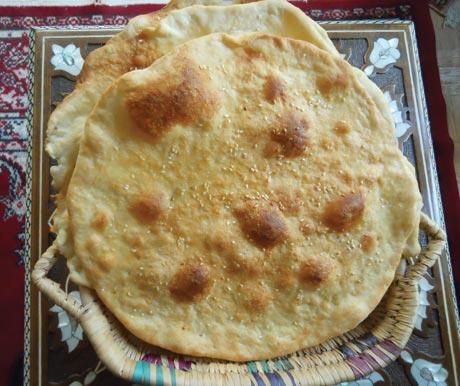




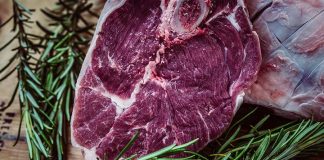
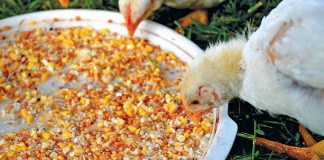




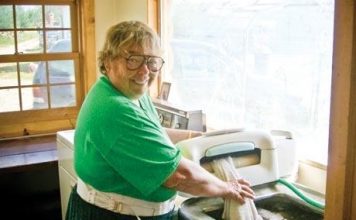
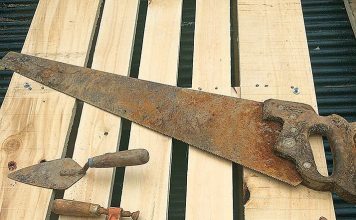


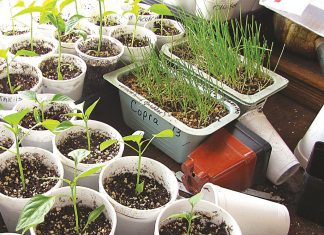
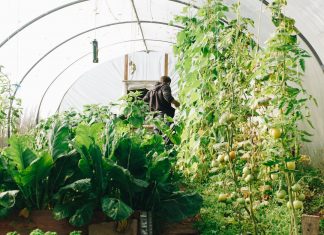
What about Samoon? It certainly may be an americanized term, but I eat this “puffy” “long” “pita” type bread. Is this more like a general Lavash really?